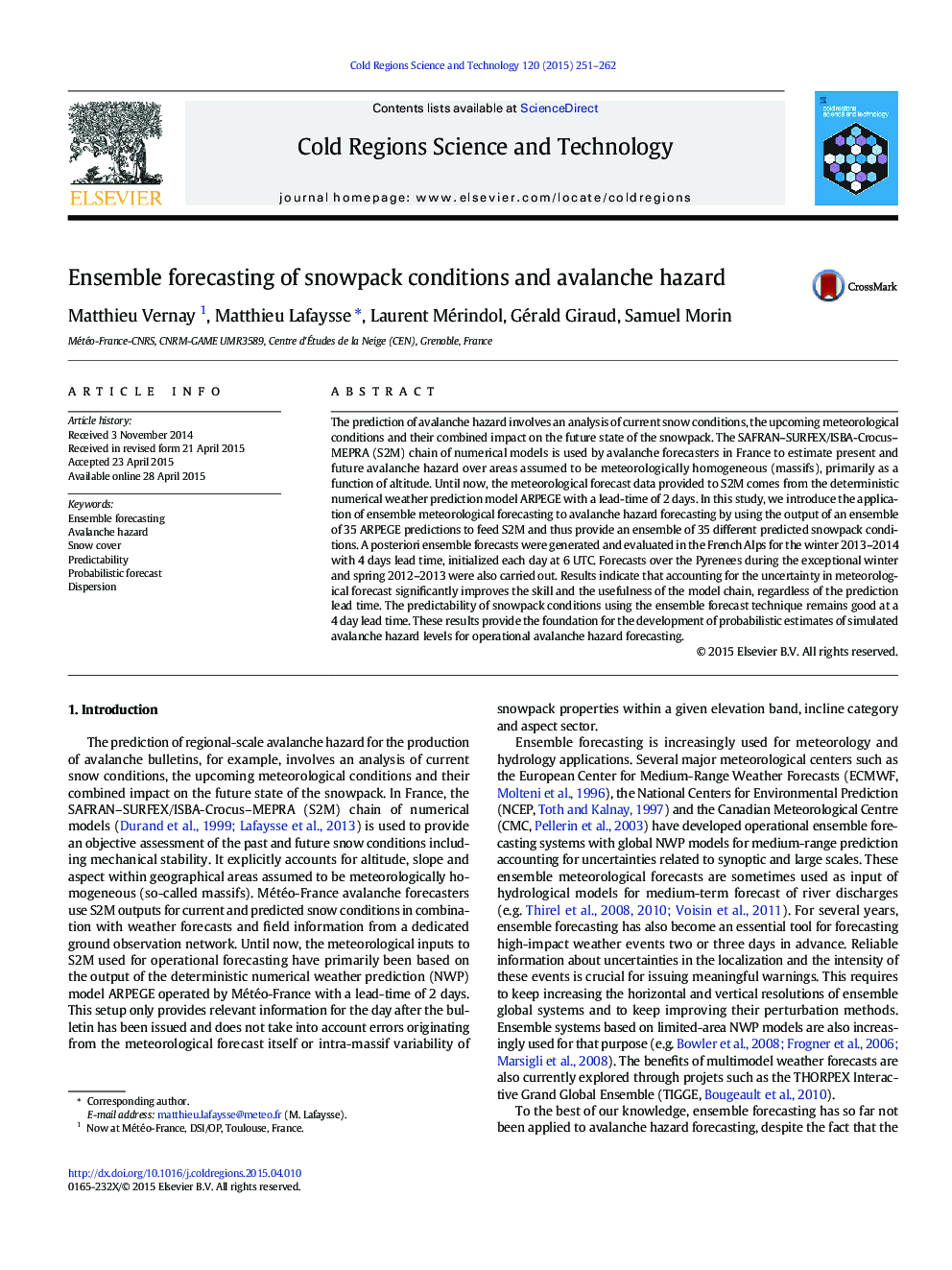| Article ID | Journal | Published Year | Pages | File Type |
|---|---|---|---|---|
| 6426739 | Cold Regions Science and Technology | 2015 | 12 Pages |
Abstract
The prediction of avalanche hazard involves an analysis of current snow conditions, the upcoming meteorological conditions and their combined impact on the future state of the snowpack. The SAFRAN-SURFEX/ISBA-Crocus-MEPRA (S2M) chain of numerical models is used by avalanche forecasters in France to estimate present and future avalanche hazard over areas assumed to be meteorologically homogeneous (massifs), primarily as a function of altitude. Until now, the meteorological forecast data provided to S2M comes from the deterministic numerical weather prediction model ARPEGE with a lead-time of 2Â days. In this study, we introduce the application of ensemble meteorological forecasting to avalanche hazard forecasting by using the output of an ensemble of 35 ARPEGE predictions to feed S2M and thus provide an ensemble of 35 different predicted snowpack conditions. A posteriori ensemble forecasts were generated and evaluated in the French Alps for the winter 2013-2014 with 4Â days lead time, initialized each day at 6 UTC. Forecasts over the Pyrenees during the exceptional winter and spring 2012-2013 were also carried out. Results indicate that accounting for the uncertainty in meteorological forecast significantly improves the skill and the usefulness of the model chain, regardless of the prediction lead time. The predictability of snowpack conditions using the ensemble forecast technique remains good at a 4Â day lead time. These results provide the foundation for the development of probabilistic estimates of simulated avalanche hazard levels for operational avalanche hazard forecasting.
Related Topics
Physical Sciences and Engineering
Earth and Planetary Sciences
Earth and Planetary Sciences (General)
Authors
Matthieu Vernay, Matthieu Lafaysse, Laurent Mérindol, Gérald Giraud, Samuel Morin,
